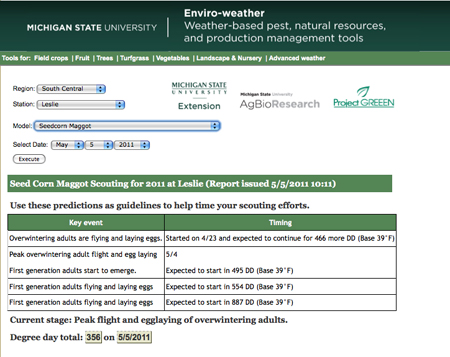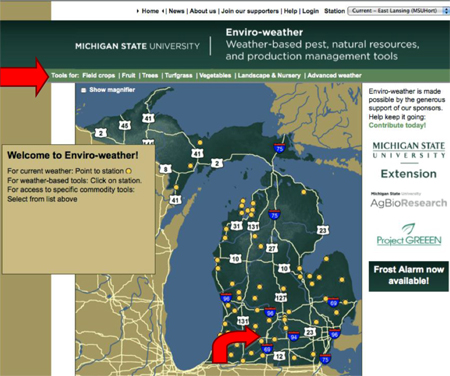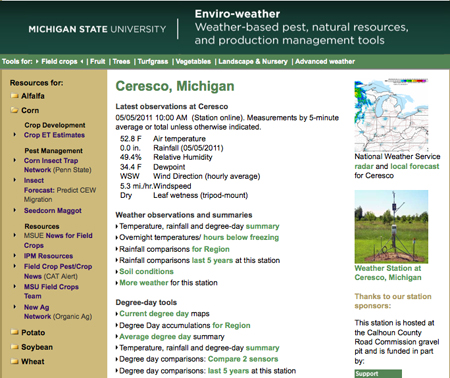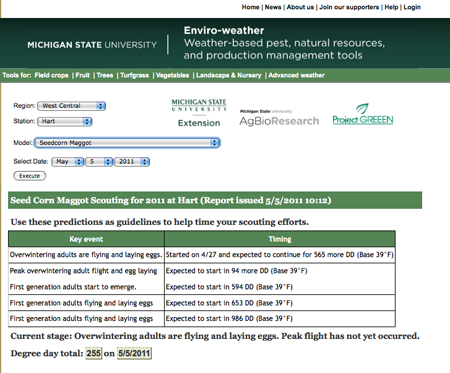New seed corn maggot tool available on Enviro-weather
New tool predicts that seed corn maggot is flying and laying eggs in most locations in Michigan’s Lower Peninsula.
Unlike most of us, seed corn maggots thrive during cool, wet springs. A new, predictive tool on Enviro-weather can help growers determine when adult seed corn maggot flies are laying eggs, as a guide to help time scouting and planting activities.
The seed corn maggot tool predicts when certain life stages will occur based on heat accumulation (degree-days) from data recorded by local weather stations (Figure 1). The table shows key events in the lifecycle (on the left) and predicted timing of such events (right column). The current status of the pest is given right below the table, along with current degree-day accumulations. As with all predictive models, microclimate and other factors may influence exact timing of events, and these predictions should only be used as a guide to help plan scouting and field activities.

Figure 1. Seed corn maggot scouting for Leslie, Mich.
The tool was developed using published research that determined when key life cycle events occurred based on accumulated degree-days. MSU Extension researchers collected several years worth of data to make sure these predictions were accurate under Michigan conditions.
You can access the new seed corn maggot tool by going to the Enviro-weather home page. You will see a map of Michigan with Enviro-weather station locations indicated by yellow dots (Figure 2). Select the weather station closest to you by clicking on the appropriate dot. Click on “Field Crops” in the light green bar at the top of the page (“Tools for:”). This will take you to the “field crops commodity page” (Figure 3). Clicking on a folder in this column (e.g., “corn”) opens that folder and displays specific tools available for that crop. Click on the “seed corn maggot” link to be taken to the seed corn maggot tool.

Figure 2. Enviro-weather station locations are indicated by yellow dots.

Figure 3. Field crops commodity page.
The predictions shown in the table use accumulated degree-days at whatever station you select. You can easily switch to another station by using the pull down menus at the top of the page and then clicking on the “execute” (Figure 4). On May 5, 2011, the seed corn maggot tool was predicting that adults were flying and laying eggs throughout most of the Lower Peninsula. In the southern most counties, peak flight had already occurred, and in the northernmost counties, peak flight had not yet occurred.

Figure 4. Switch to another station by using the pull down menus at the top of the page.
We hope you will find the seed corn maggot predictive tools useful. We want to hear from you! If you have questions, comments, complaints, suggestions or compliments, please share them with us. I can be reached at bishopb@msu.edu, eweather@msu.edu, or 517-432-6520.



 Print
Print Email
Email



